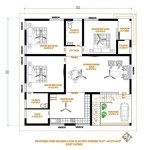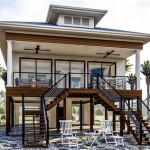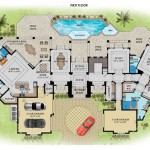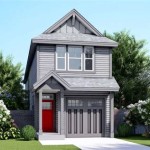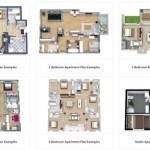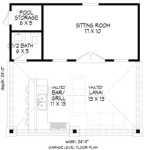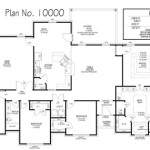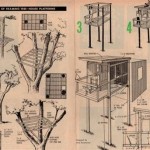2 Bedroom Garage Floor Plans: Exploring Multifunctional Design
The concept of transforming a garage into a living space, particularly a two-bedroom dwelling, is gaining popularity. This stems from various factors, including the need for affordable housing, maximizing existing property space, and creating independent living units for family members or rental income. Designing a 2-bedroom garage floor plan requires careful consideration of building codes, space optimization, and functional design to create a comfortable and livable environment.
Converting a garage into a two-bedroom living space is not a straightforward task. Garages are typically designed for vehicle storage and often lack the necessary infrastructure for residential living, such as proper insulation, plumbing, and electrical wiring. Furthermore, local building codes and zoning regulations may impose specific requirements and restrictions on garage conversions. Therefore, a thorough understanding of these factors is crucial before embarking on such a project.
The scope of a 2-bedroom garage floor plan extends beyond simply dividing the space into two bedrooms. It necessitates the inclusion of a bathroom, a kitchen or kitchenette, a living area, and adequate storage. The layout must also ensure proper ventilation, lighting, and accessibility. Considerations for soundproofing and fire safety are paramount to ensure the comfort and safety of the occupants.
Key Point 1: Regulatory Compliance and Permitting
Before initiating any garage conversion project, it is imperative to thoroughly investigate local building codes and zoning regulations. These regulations vary significantly from one municipality to another and dictate permissible uses of garage space, minimum room sizes, setbacks, parking requirements, and other crucial factors. Failure to comply with these regulations can result in costly fines, project delays, and even the forced removal of non-compliant structures.
Obtaining the necessary permits is a critical step in ensuring regulatory compliance. This involves submitting detailed floor plans, structural drawings, and other relevant documentation to the local building department for review and approval. The permit process typically involves inspections at various stages of the construction to ensure adherence to the approved plans and applicable building codes. Engaging with qualified architects, engineers, and contractors can help navigate the permitting process and ensure compliance with all regulatory requirements.
Zoning regulations may also dictate the circumstances under which a garage can be converted into a living space. Some jurisdictions may restrict the conversion to accessory dwelling units (ADUs), which are typically allowed only for specific purposes, such as housing family members or providing rental income. Other regulations may impose restrictions on the size of the ADU relative to the primary dwelling or require additional parking spaces to accommodate the new living unit. Understanding these restrictions is essential for developing a compliant and approvable floor plan.
Key Point 2: Optimizing Space and Functionality
Given the often limited space within a standard garage, optimizing the floor plan for a 2-bedroom layout requires careful planning and design. Prioritizing functional elements and minimizing wasted space is crucial to create a comfortable and livable environment. This often involves employing space-saving strategies, such as incorporating built-in storage, utilizing multi-functional furniture, and maximizing vertical space.
The layout of the two bedrooms should prioritize privacy and noise reduction. Careful placement of walls, insulation, and soundproofing materials can help minimize sound transmission between the bedrooms and other living areas. The size of the bedrooms should comply with minimum room size requirements stipulated by local building codes. Incorporating closets or wardrobe spaces within each bedroom is essential for providing adequate storage.
The living area should be designed to accommodate seating, entertainment, and dining. Open-concept layouts can help maximize the perceived space and create a more fluid transition between the living area and the kitchen. The kitchen or kitchenette should include essential appliances, such as a refrigerator, stove, sink, and microwave. Efficient storage solutions, such as cabinets and drawers, are crucial for maximizing functionality within a compact kitchen space.
The bathroom should comply with accessibility requirements and include a toilet, sink, and shower or bathtub. Proper ventilation is essential for preventing moisture buildup and maintaining air quality within the bathroom. Consider incorporating a linen closet or shelving for storing towels and toiletries.
Consideration for natural light and ventilation is essential. Windows should be strategically placed to maximize daylight penetration and provide adequate ventilation. Skylights can also be used to introduce natural light into the space. Proper insulation is crucial for maintaining a comfortable temperature throughout the year and reducing energy consumption.
Key Point 3: Structural Considerations and Utility Integration
Converting a garage into a living space involves significant structural modifications, including framing walls, installing windows and doors, and potentially altering the roof structure. It is essential to ensure that these modifications comply with structural engineering standards and building codes. Consulting with a structural engineer is recommended to assess the existing structure and determine the necessary reinforcements or modifications.
Integrating utilities, such as plumbing, electrical wiring, and HVAC systems, is a critical aspect of the conversion process. Garages typically lack the necessary plumbing infrastructure for a bathroom and kitchen. Therefore, extending water and sewer lines from the main house to the garage is required. Electrical wiring must be upgraded to meet the increased power demands of a residential living space. Installing a dedicated HVAC system or extending the existing system to the garage is essential for providing heating and cooling.
The existing garage floor may require modifications to improve insulation and prevent moisture penetration. Installing a vapor barrier beneath the flooring can help protect against moisture damage. Insulating the garage walls and roof is crucial for maintaining a comfortable temperature and reducing energy consumption. Consider using energy-efficient windows and doors to further enhance the energy performance of the converted space.
Fire safety is a paramount consideration in garage conversions. Installing smoke detectors and carbon monoxide detectors is essential for providing early warning of fire or carbon monoxide hazards. Fire-rated doors and walls may be required to provide adequate fire separation between the garage and the main house. Ensure that the converted space has at least two means of egress in case of emergency.
Furthermore, consideration should be given to accessibility, especially if the converted garage is intended for elderly or disabled occupants. Ramps, wider doorways, and accessible bathroom fixtures can enhance the usability of the space for individuals with mobility limitations. Complying with accessibility standards, such as the Americans with Disabilities Act (ADA), can ensure that the converted space is accessible to all.

12 Simple 2 Bedroom House Plans With Garages Houseplans Blog Com

12 Simple 2 Bedroom House Plans With Garages Houseplans Blog Com

Archimple 9 Simple 2 Bedroom House Plans With Garage Perfect For Small Families And

2 Bed Garage Apartment With Room For Up To 6 Cars 360093dk Architectural Designs House Plans

Pin Page

Modern 2 Bedroom Home Plan With Car Garage 80934pm Architectural Designs House Plans

Plans For A Two Bedroom Apartment Above Car Garage

What You Need To Build A Two Bedroom House

12 Simple 2 Bedroom House Plans With Garages Houseplans Blog Com

Garage Apartment Floor Plans 2 Bedrooms

